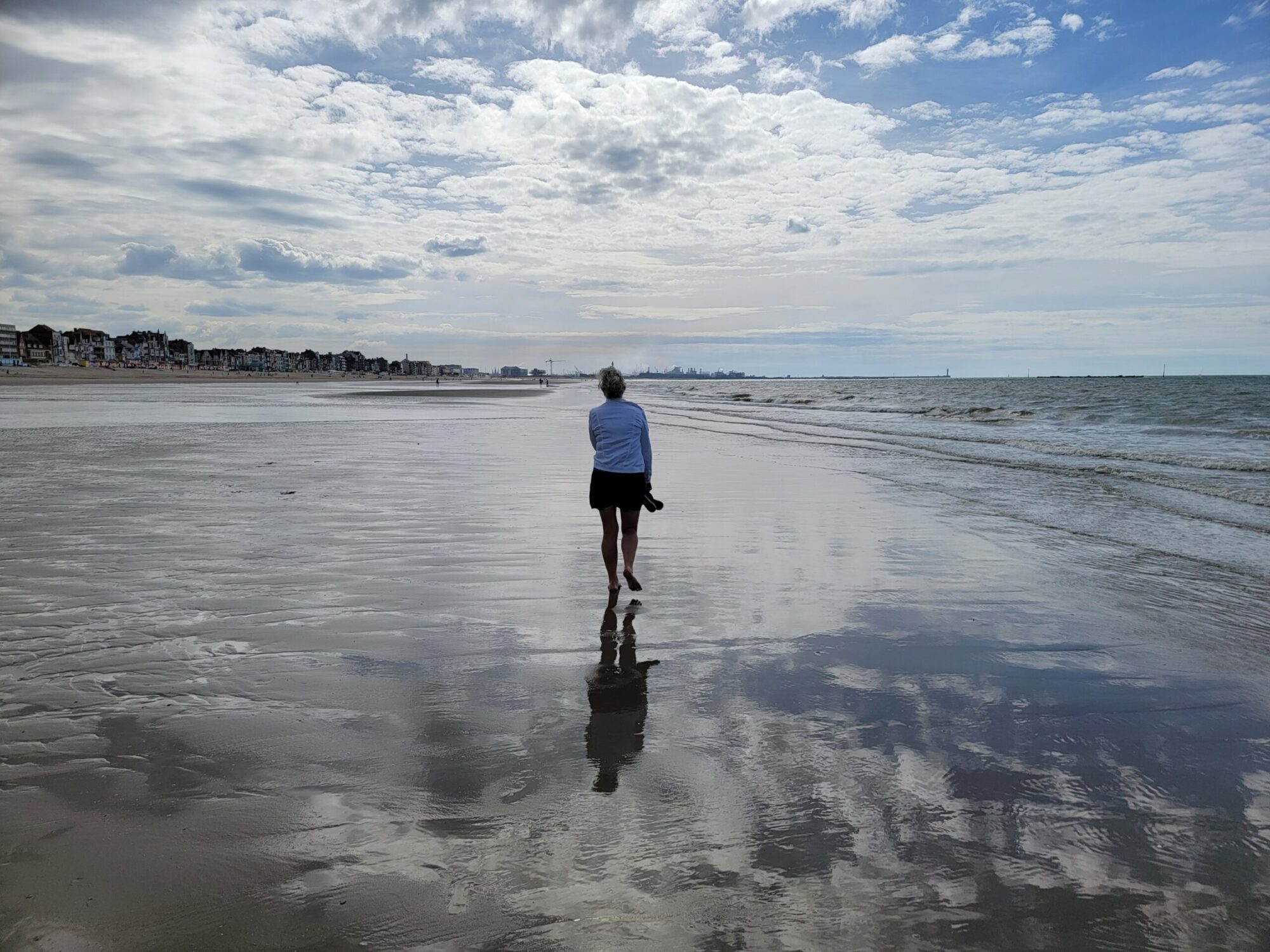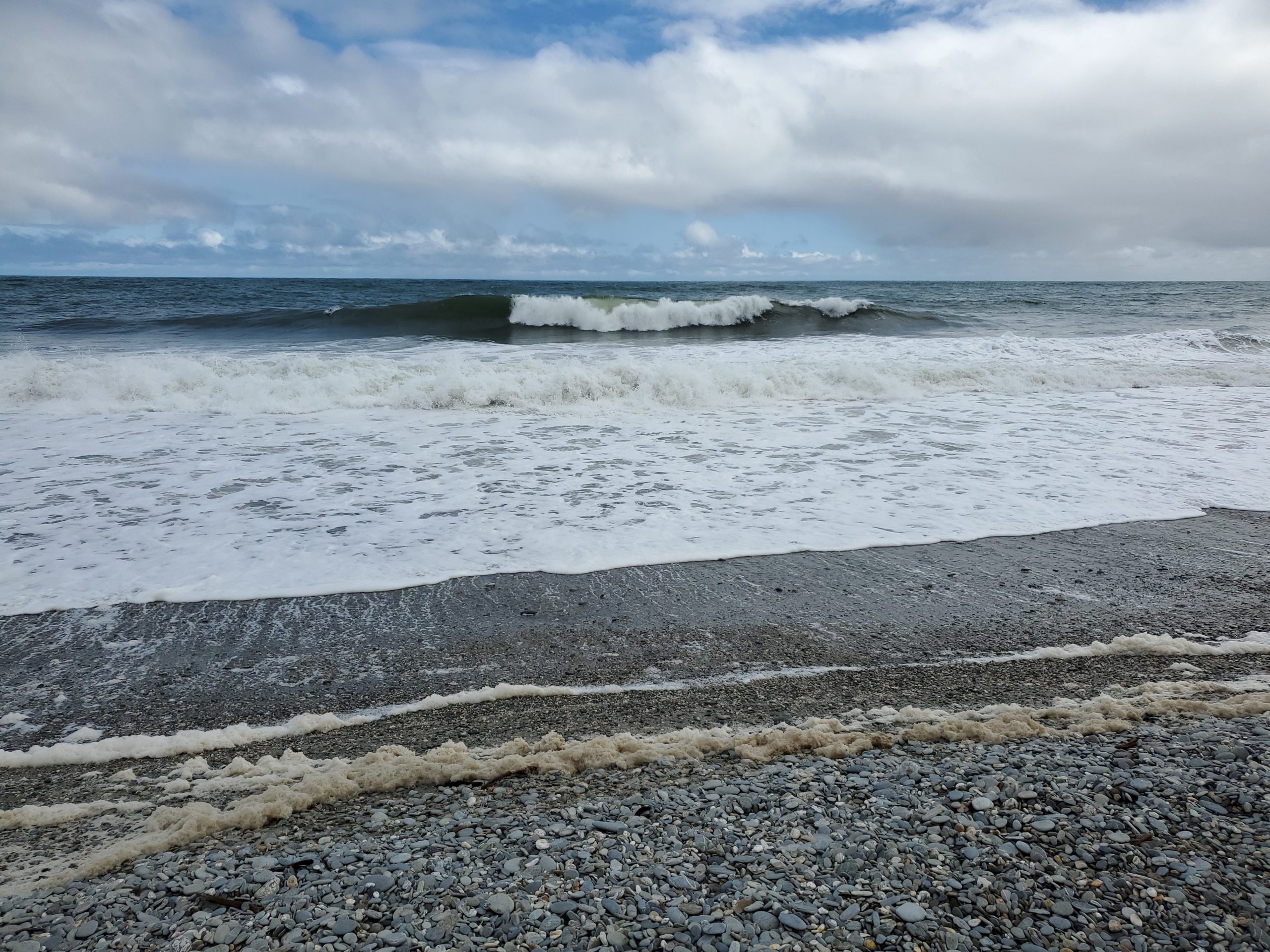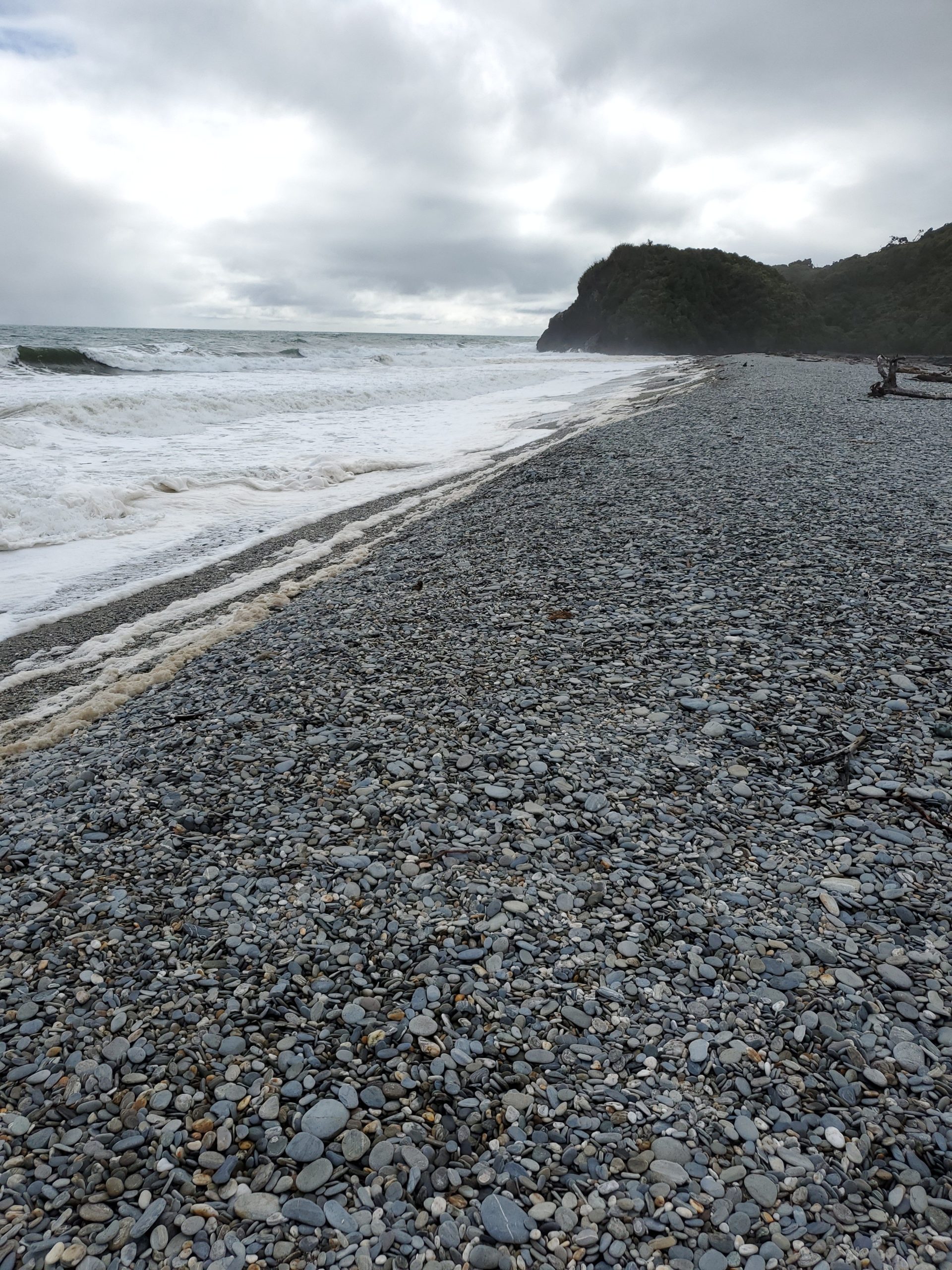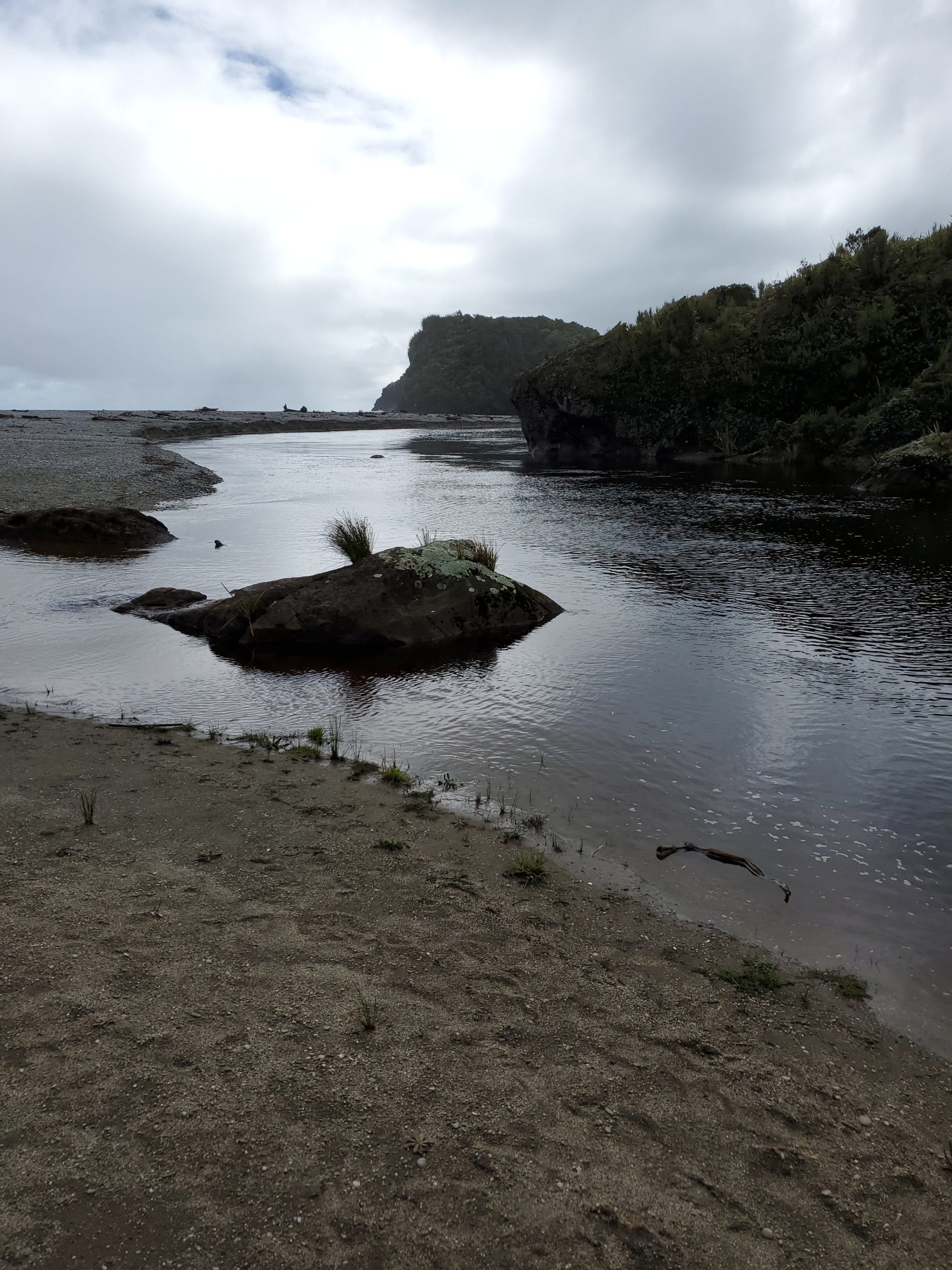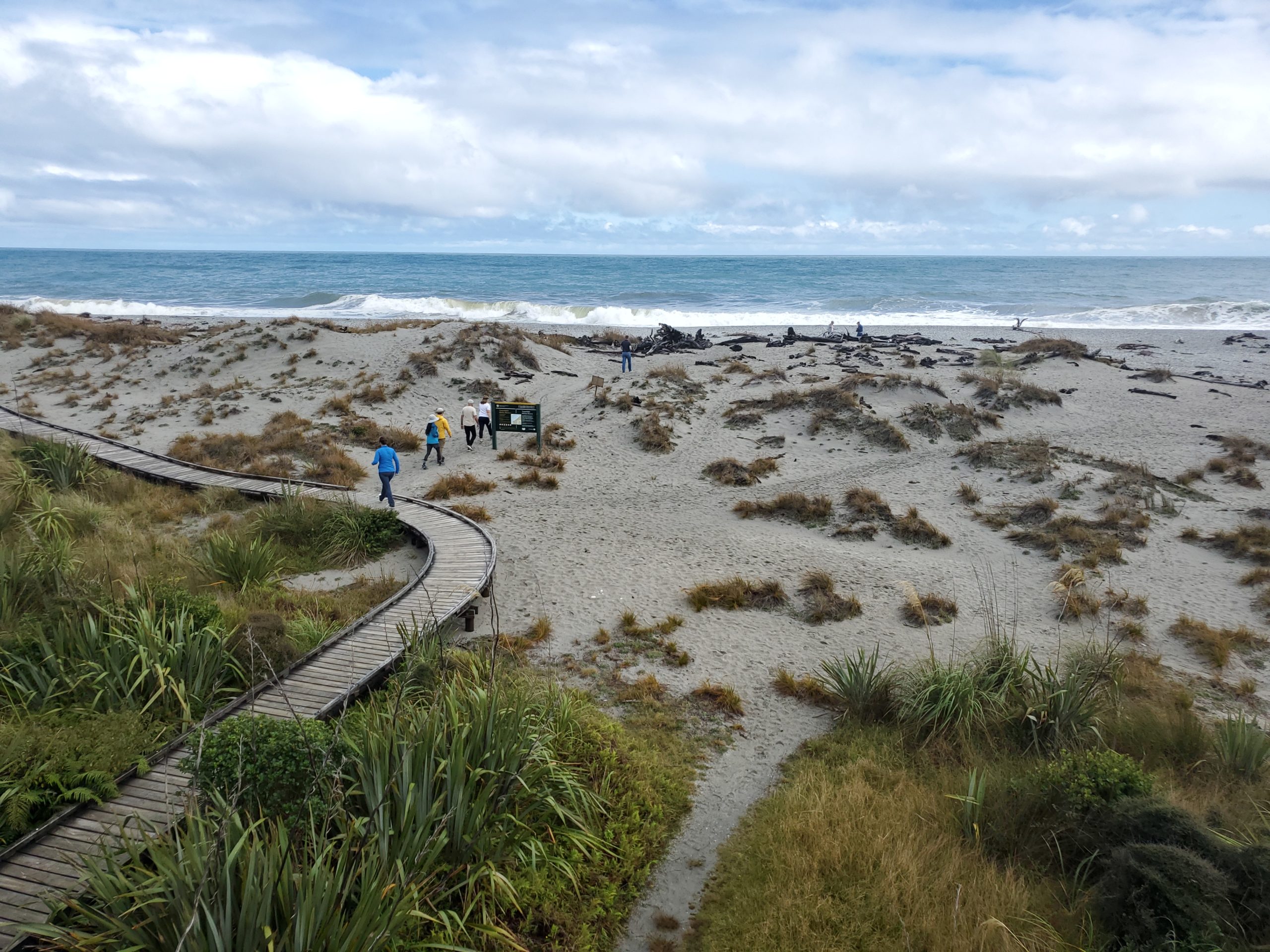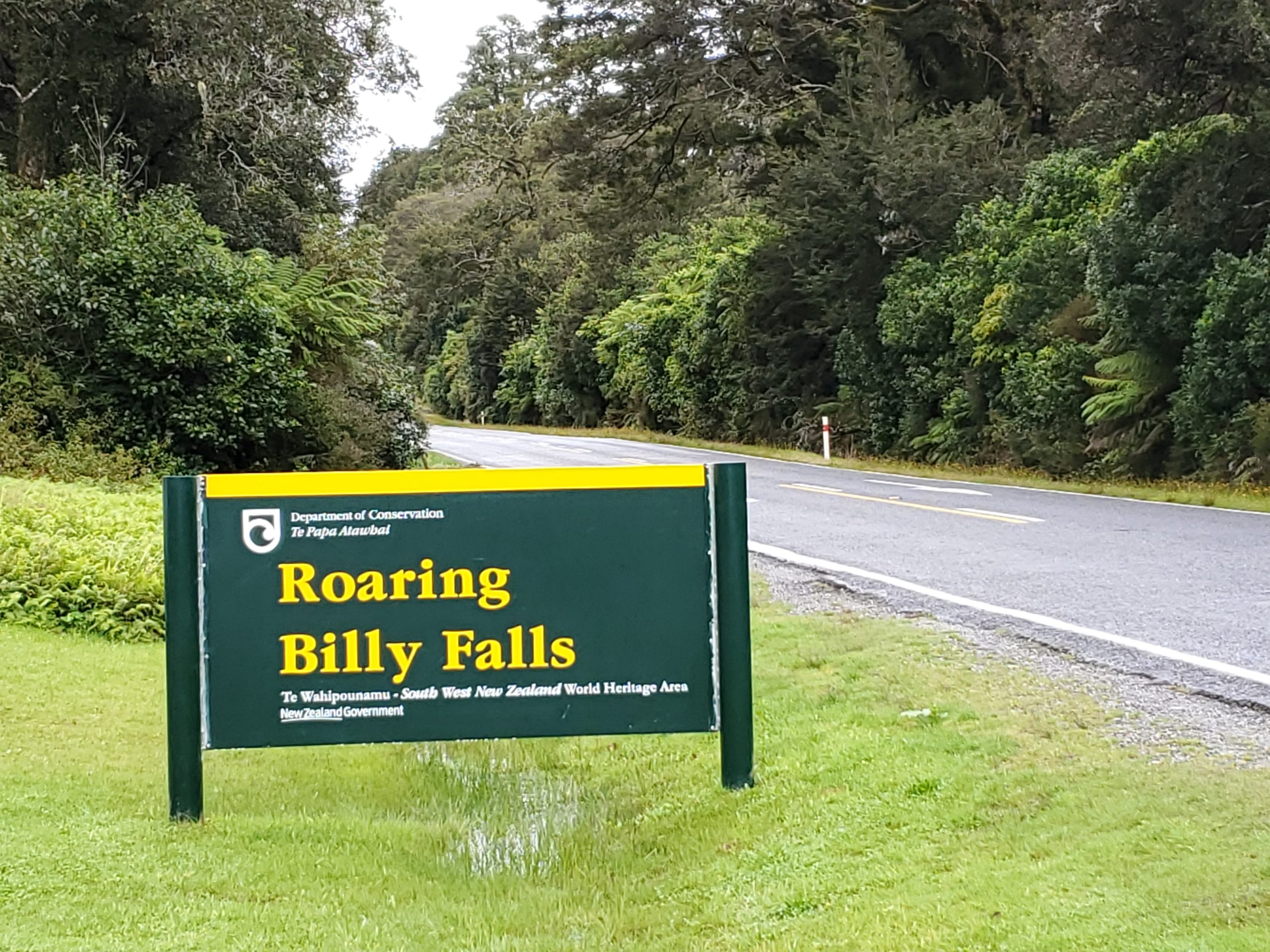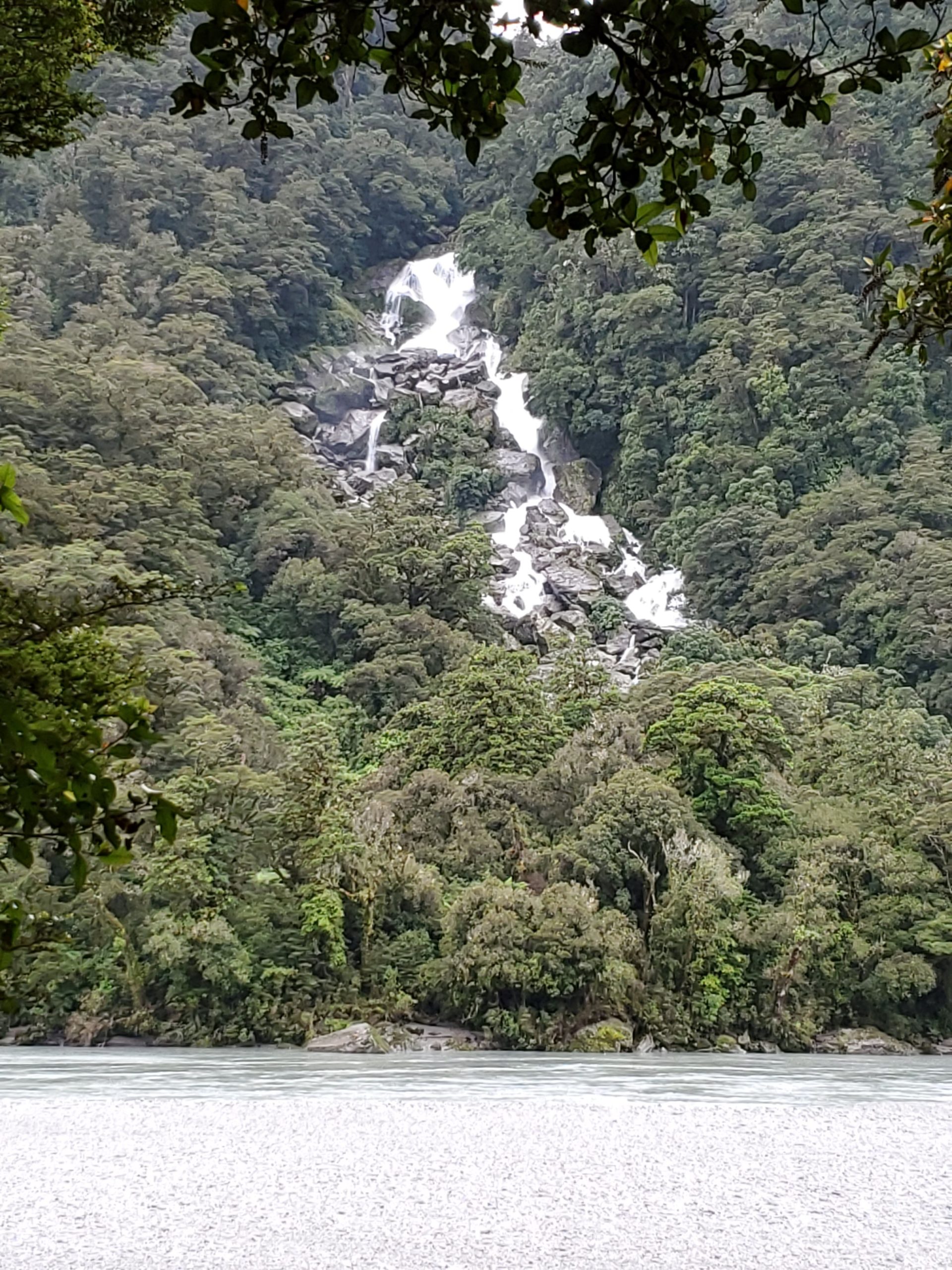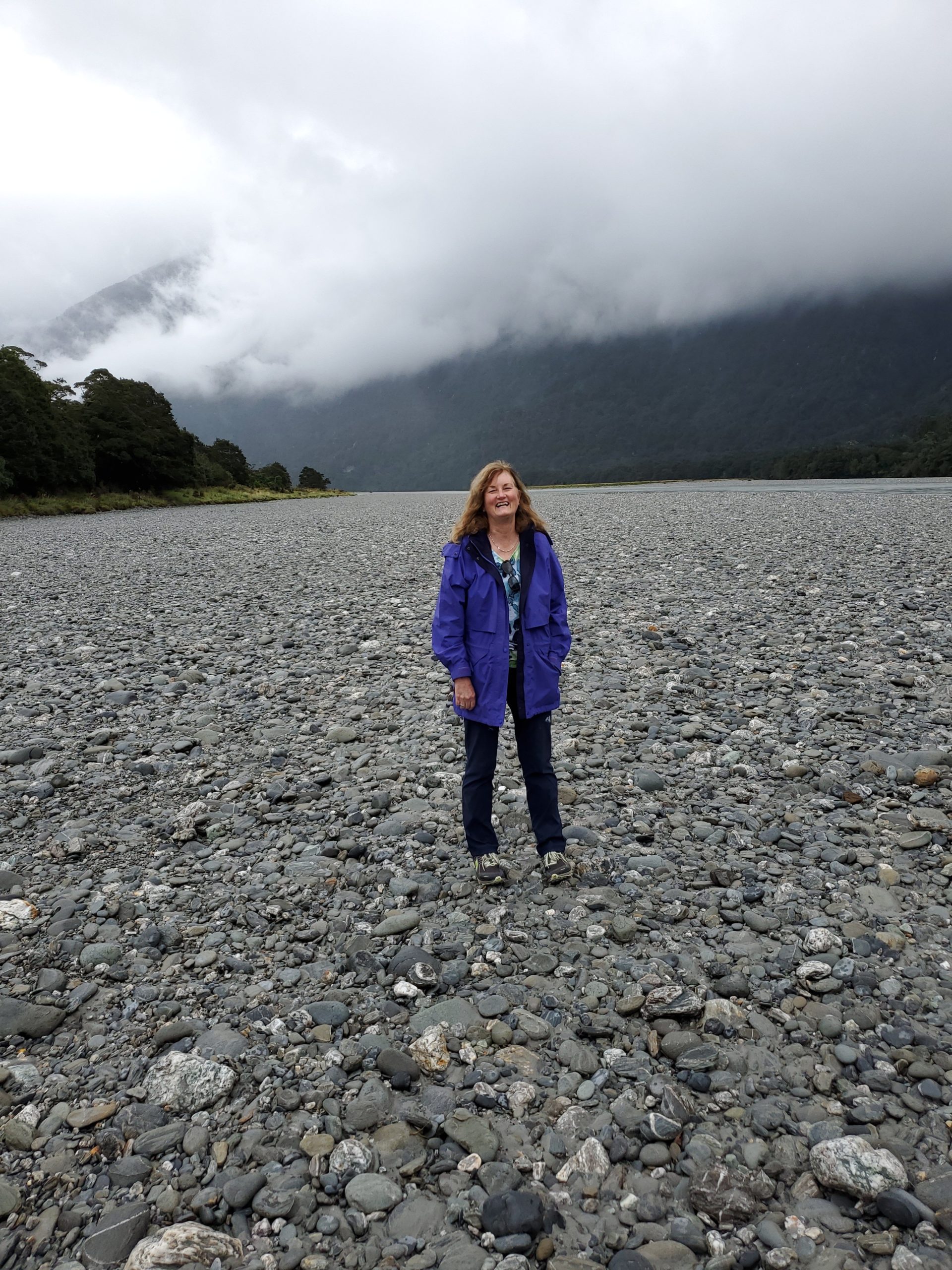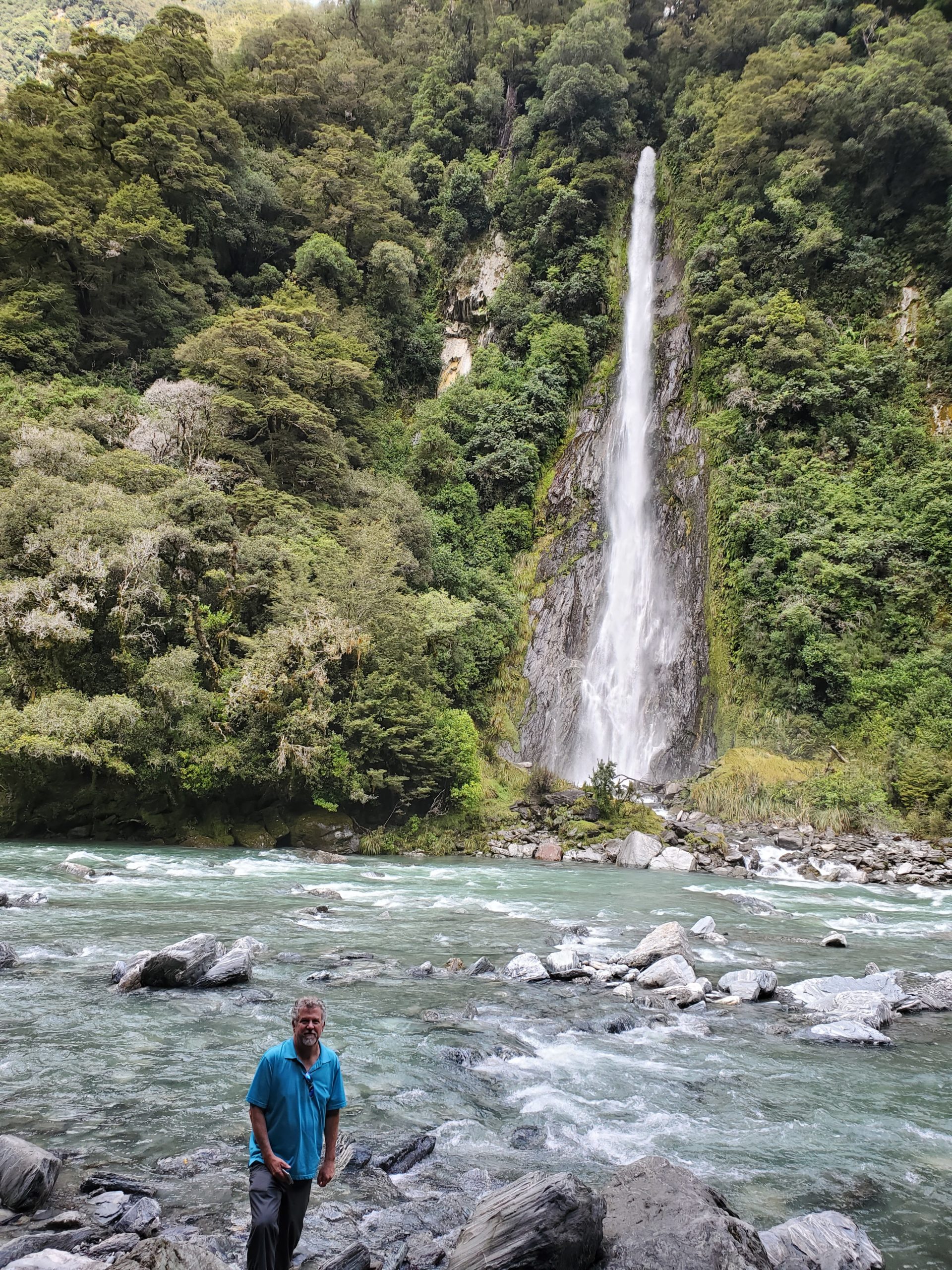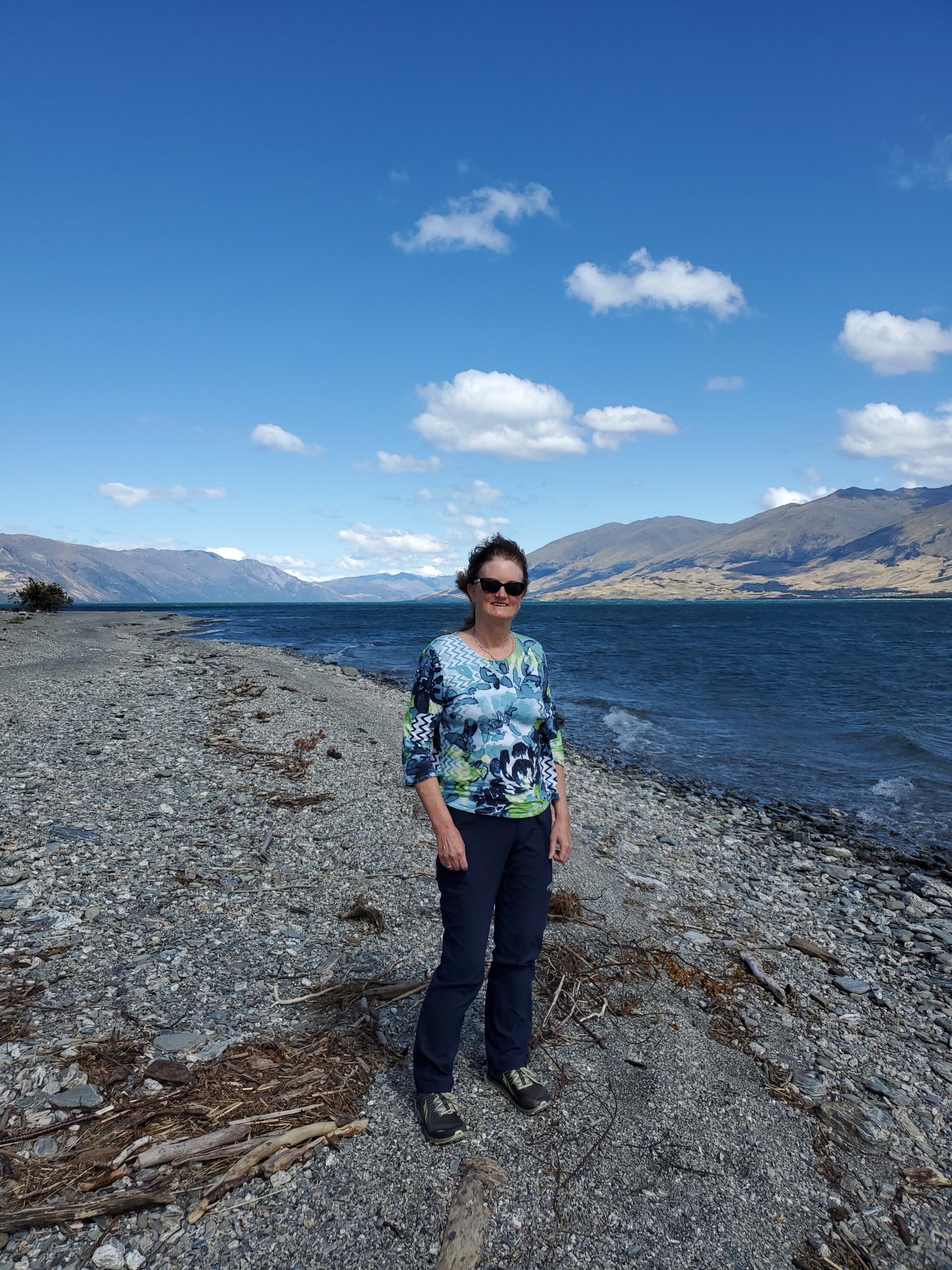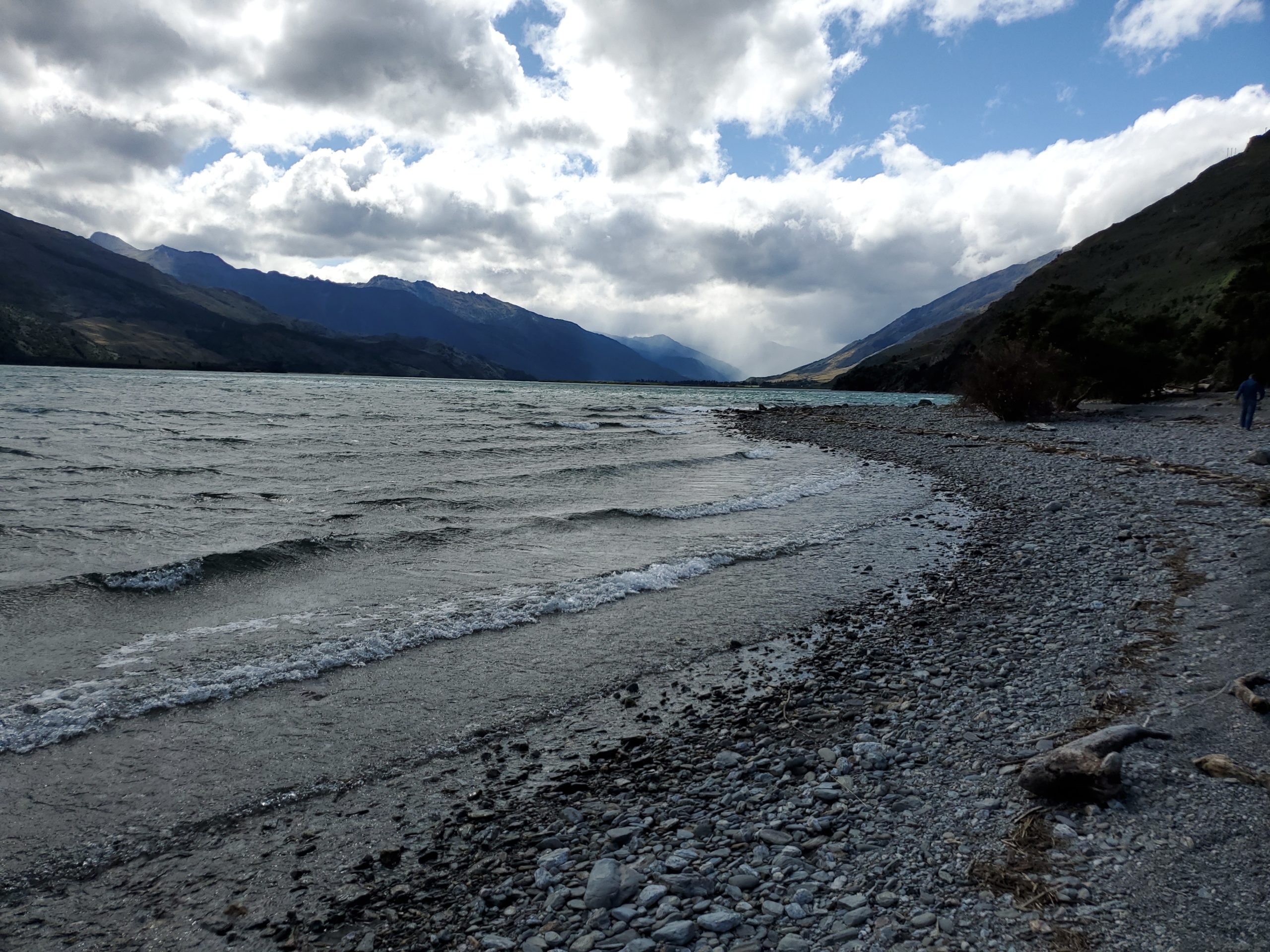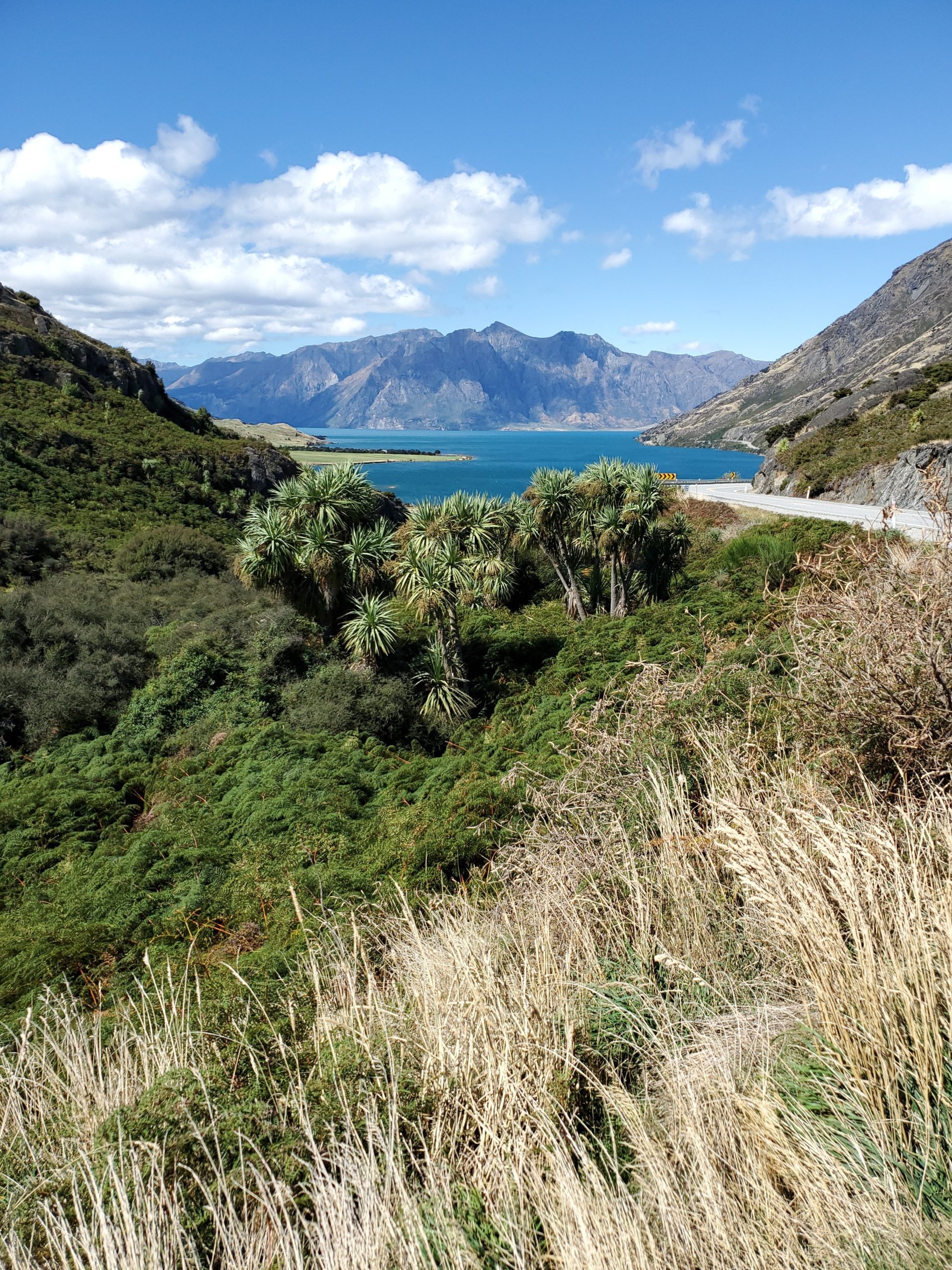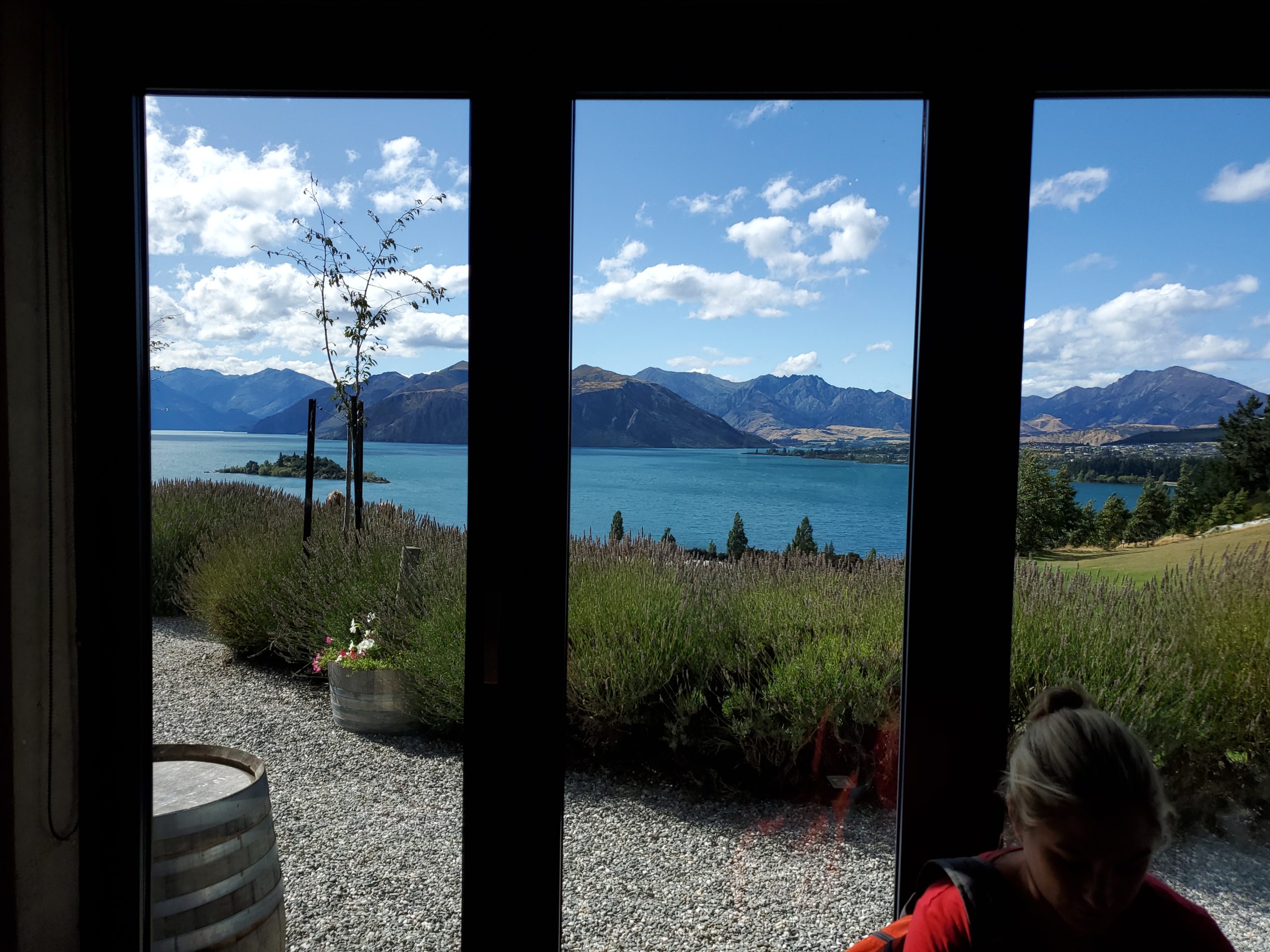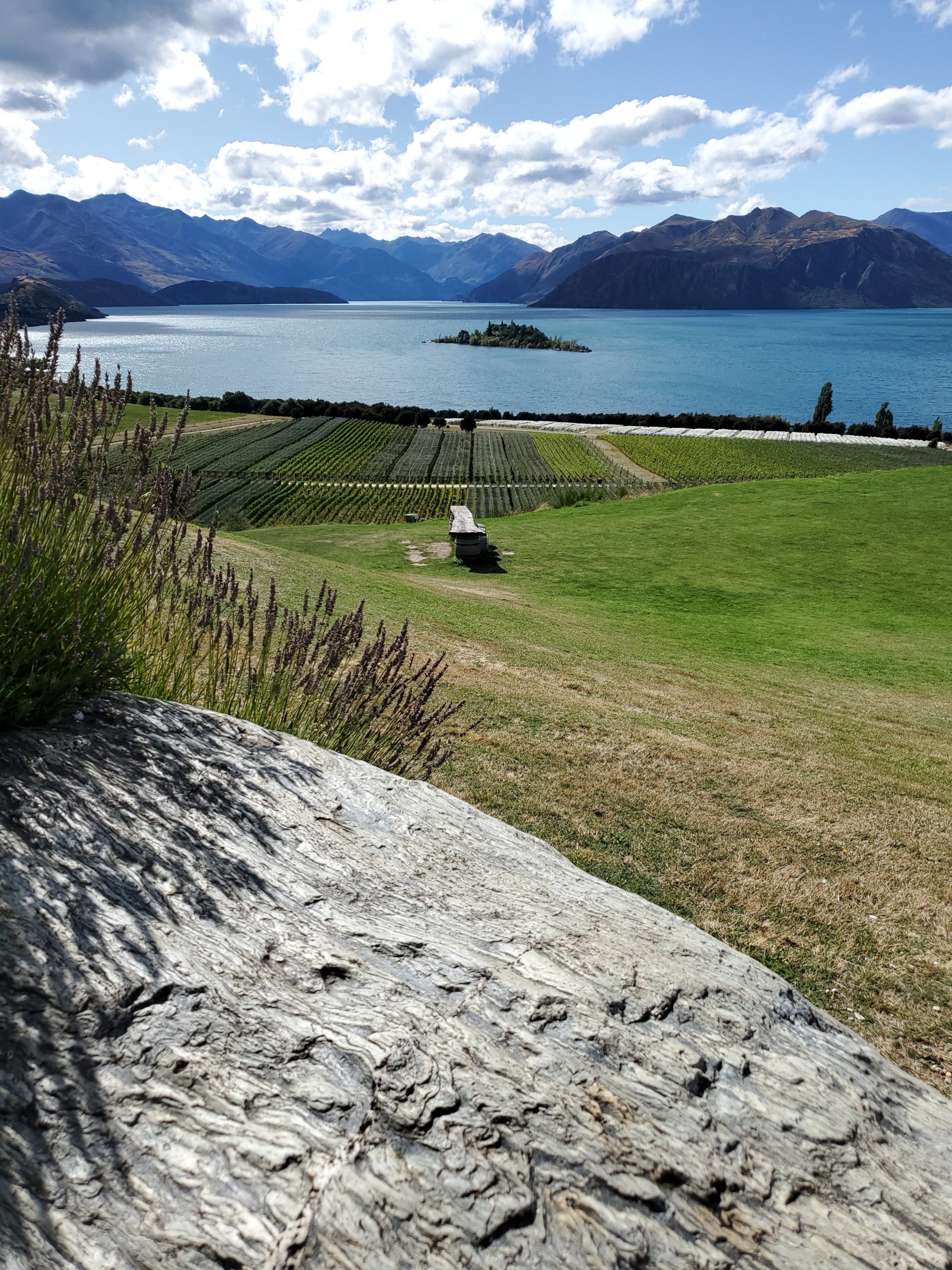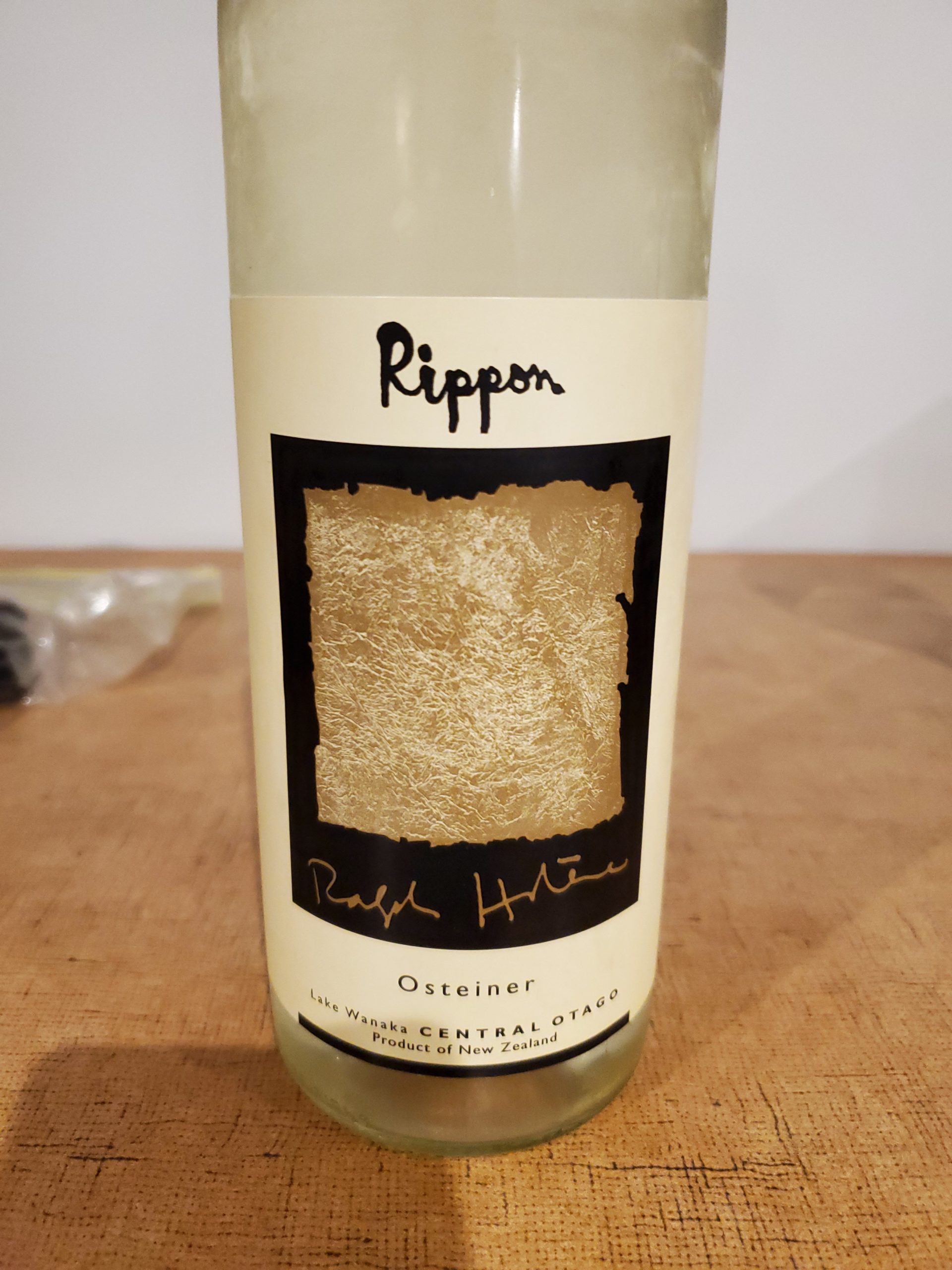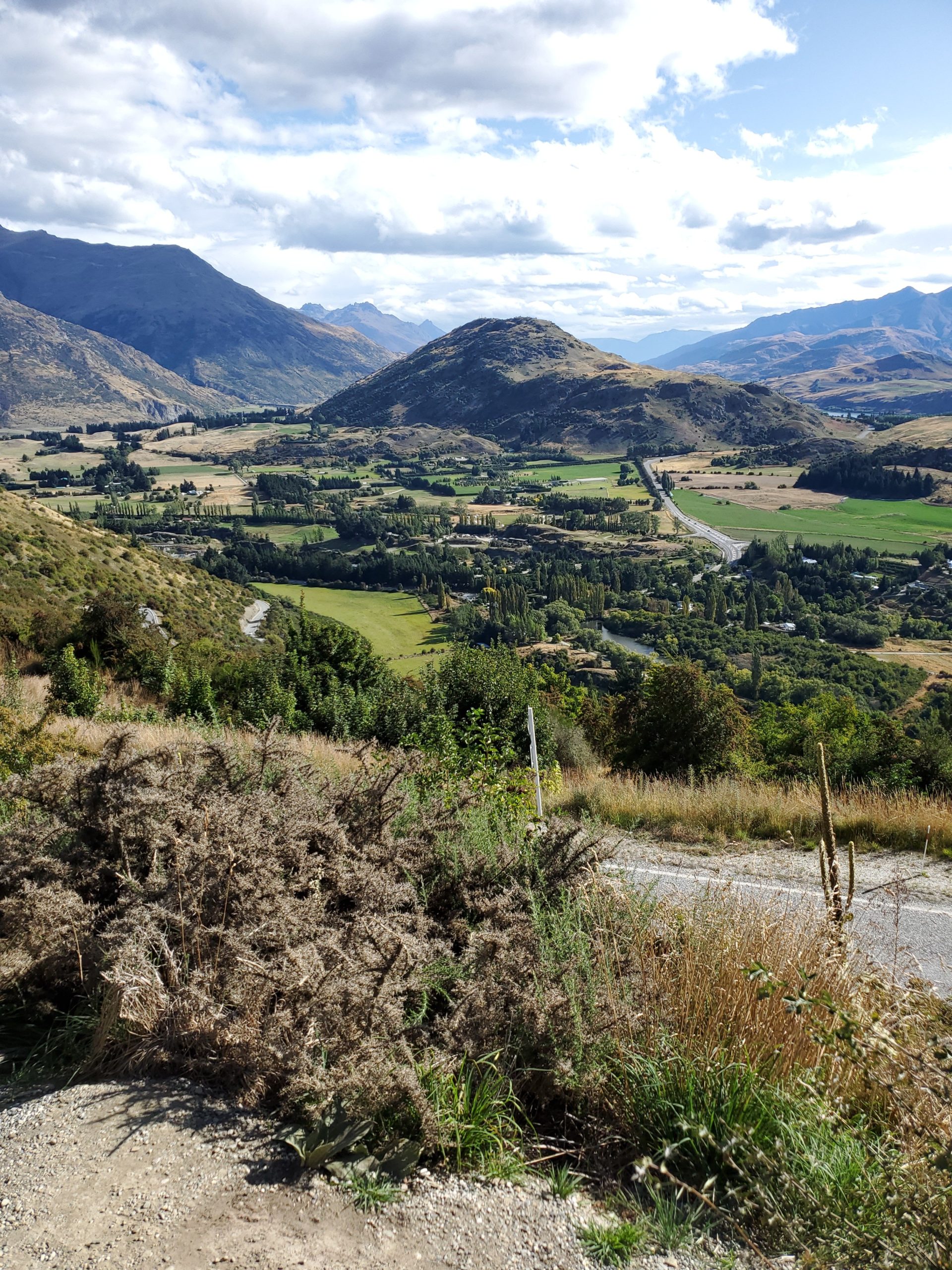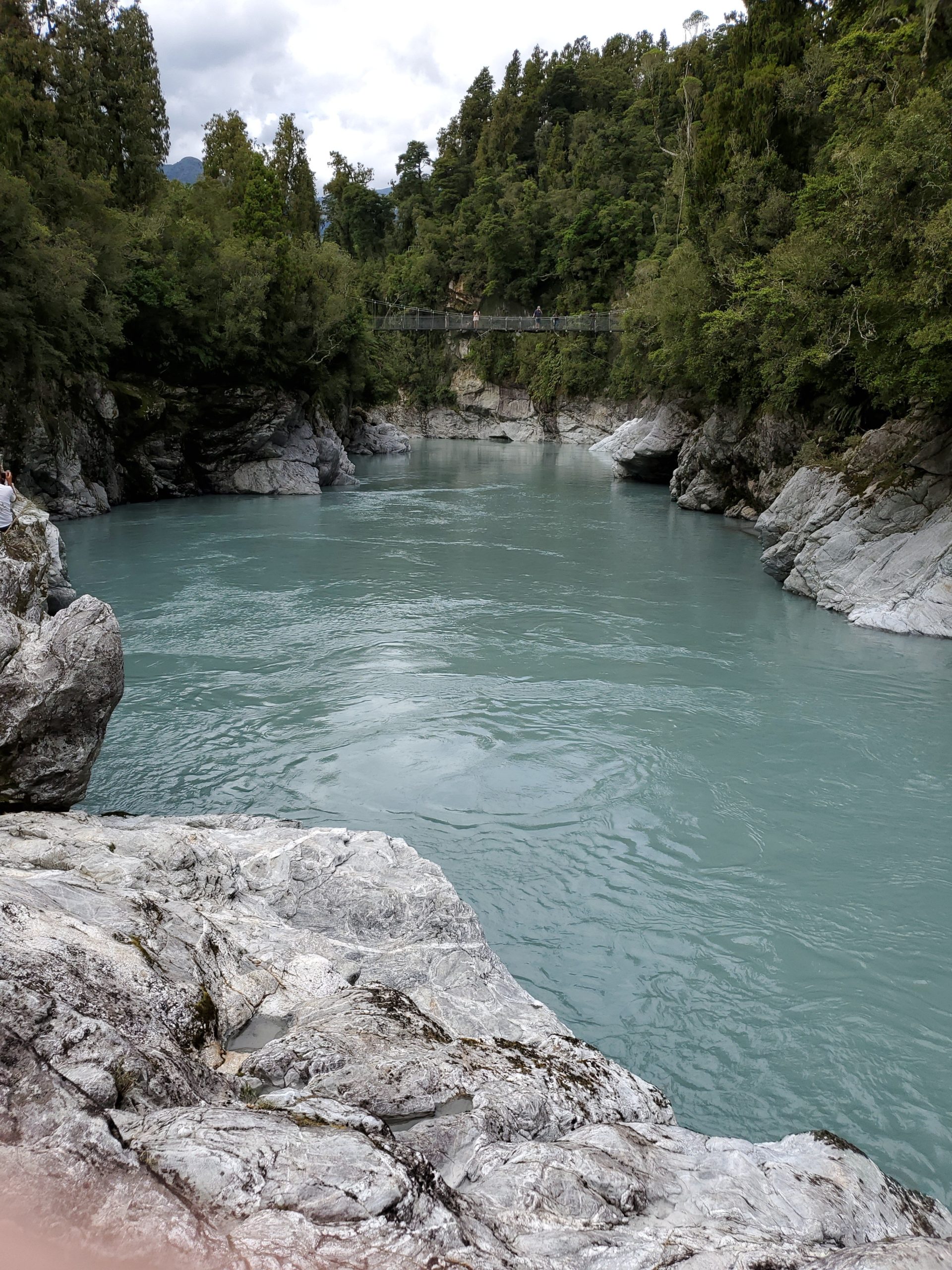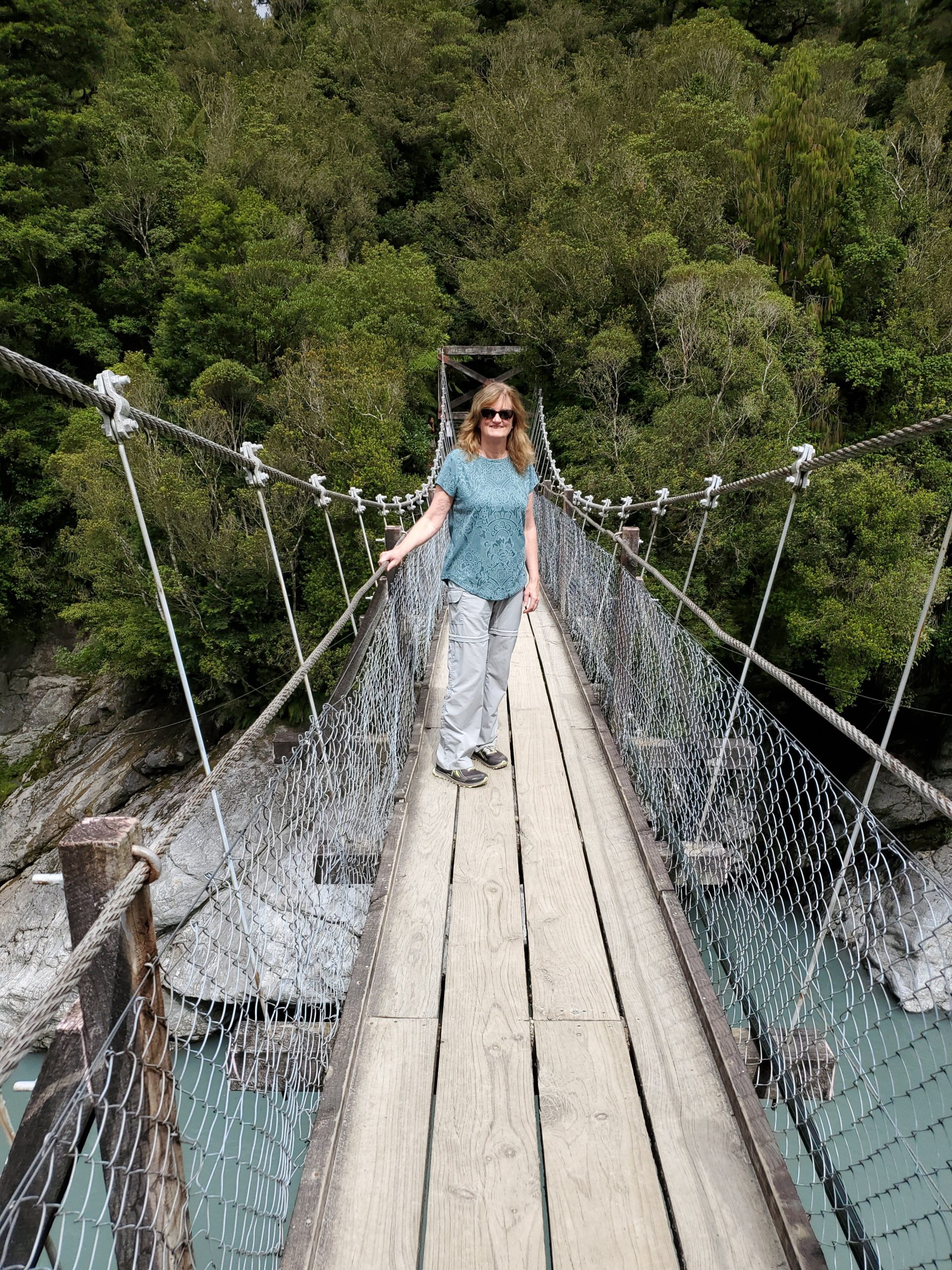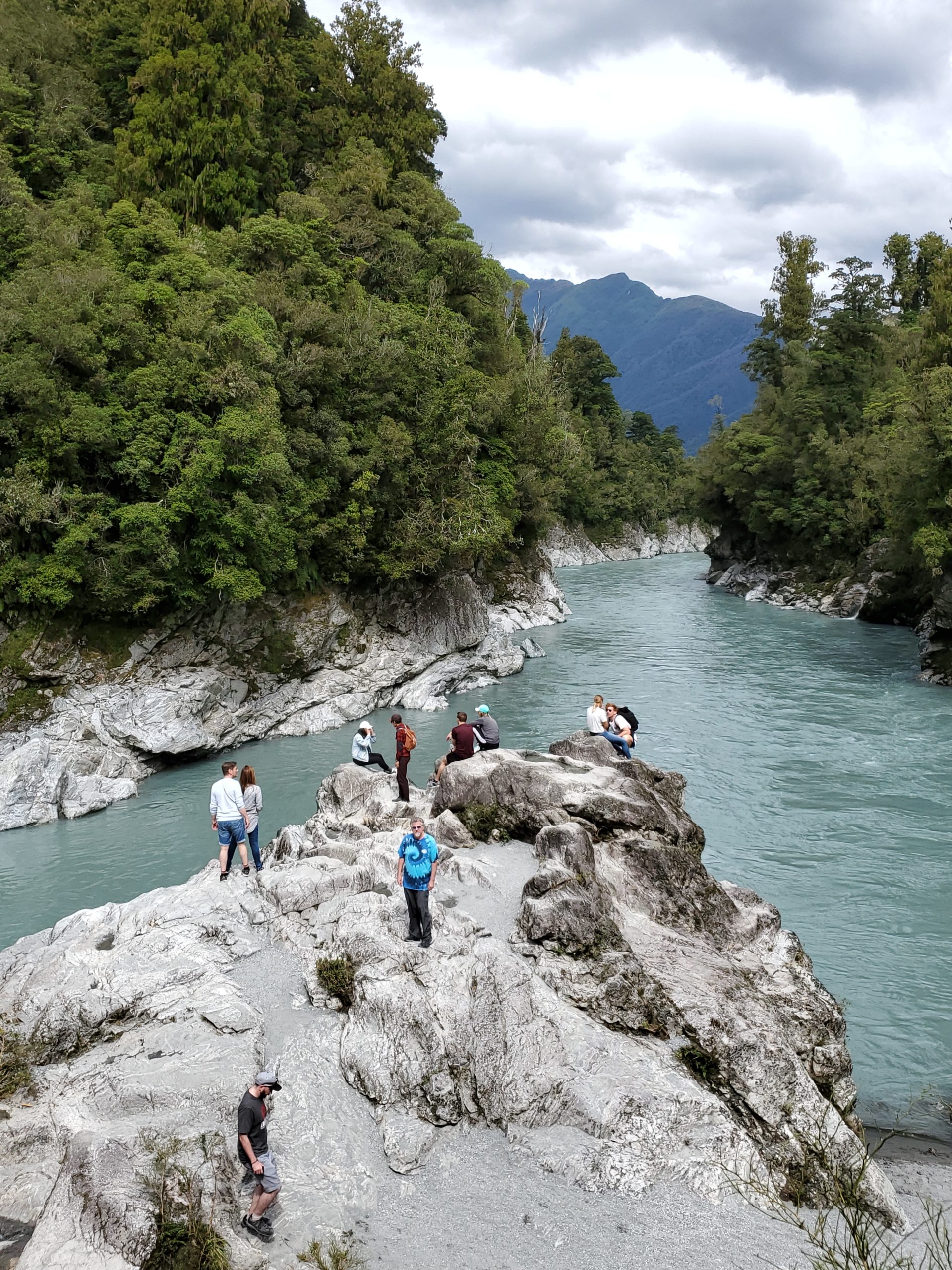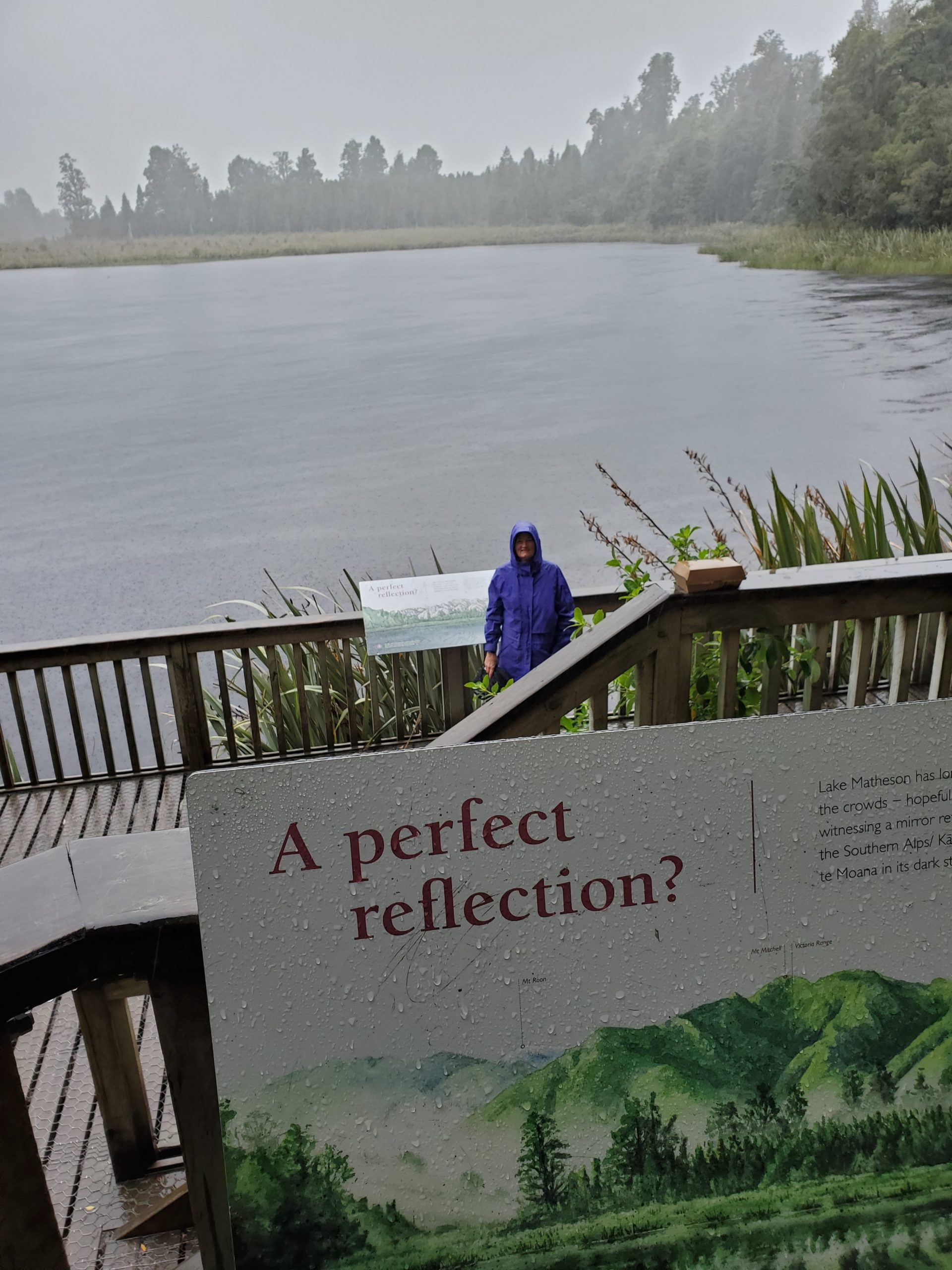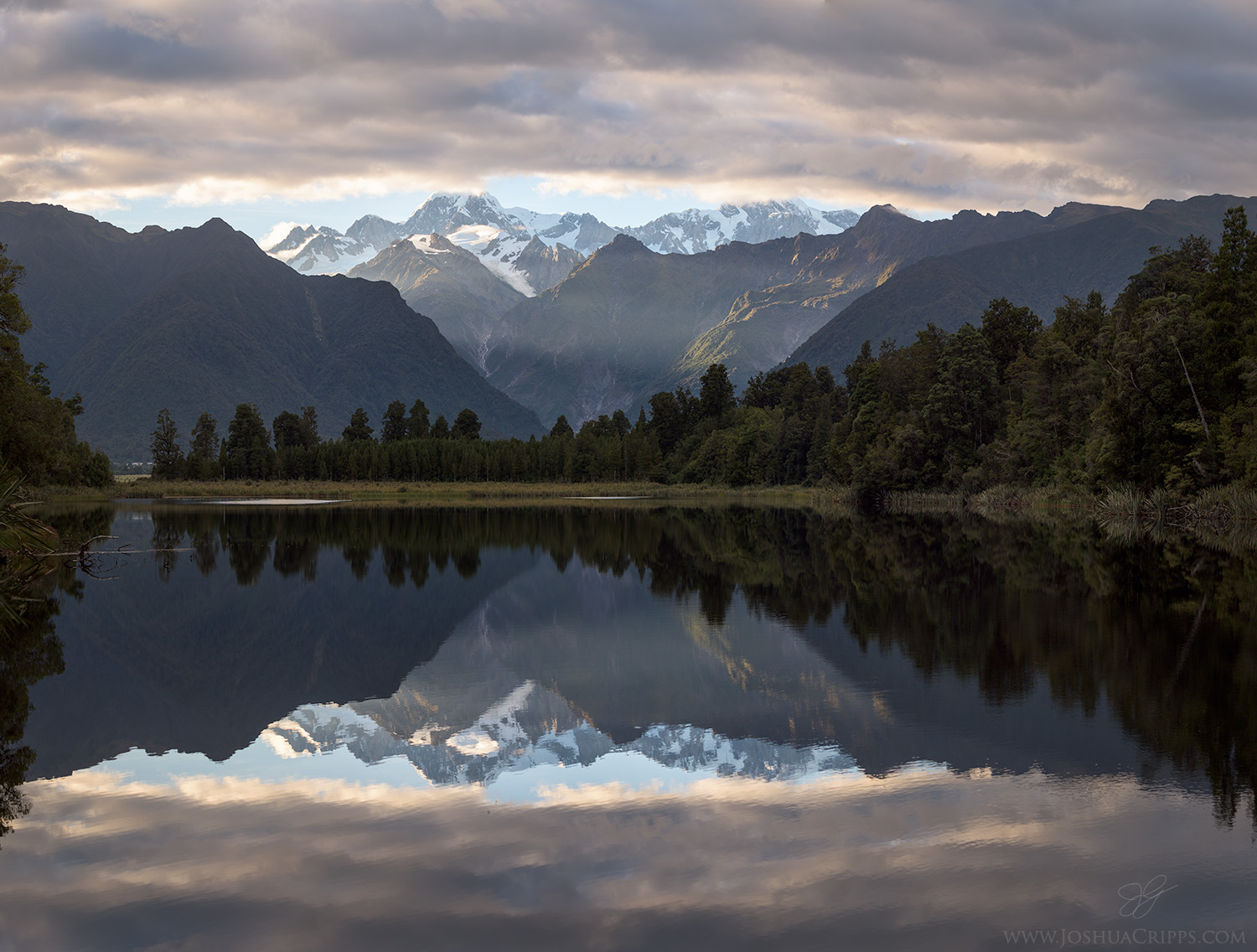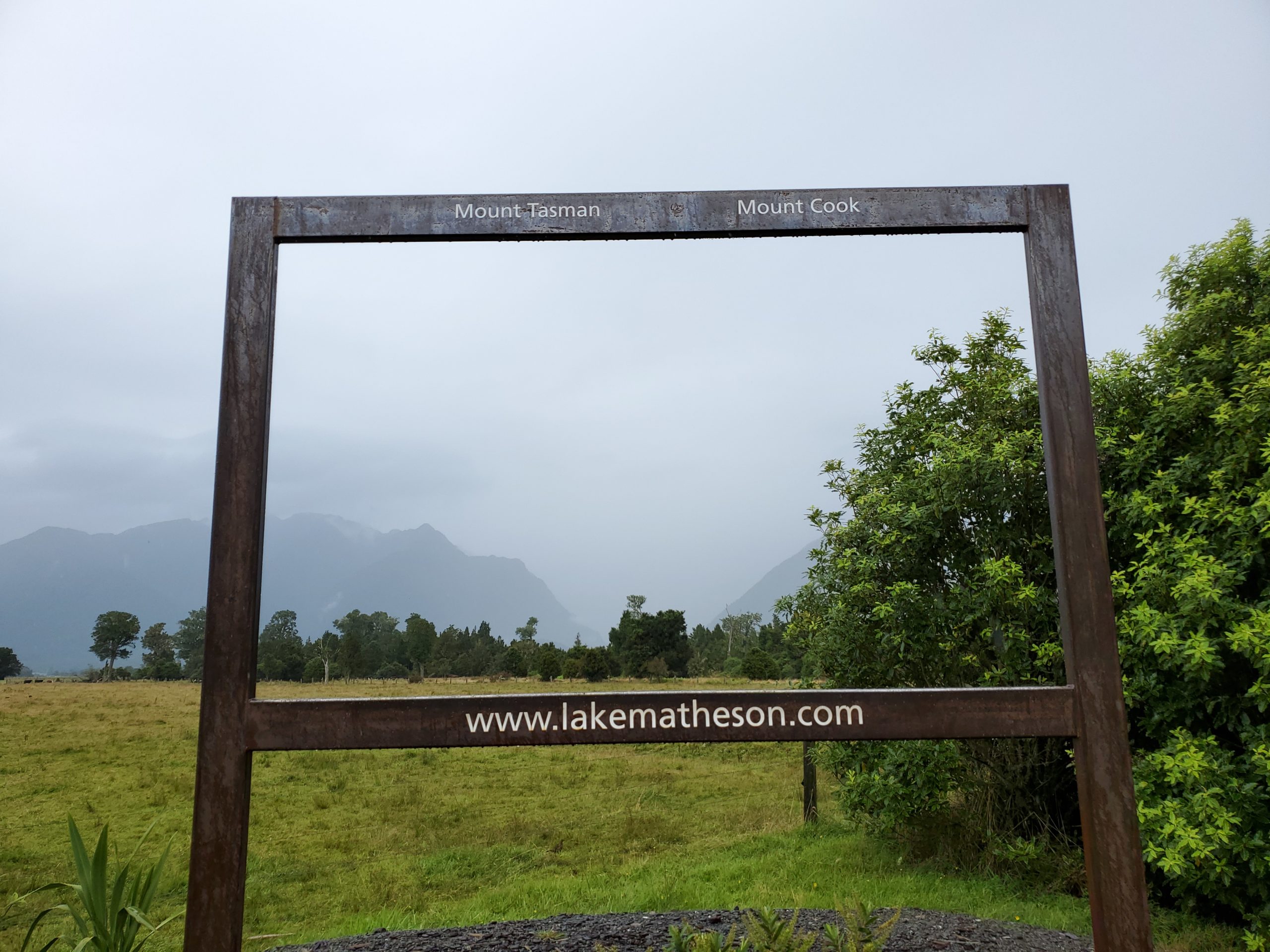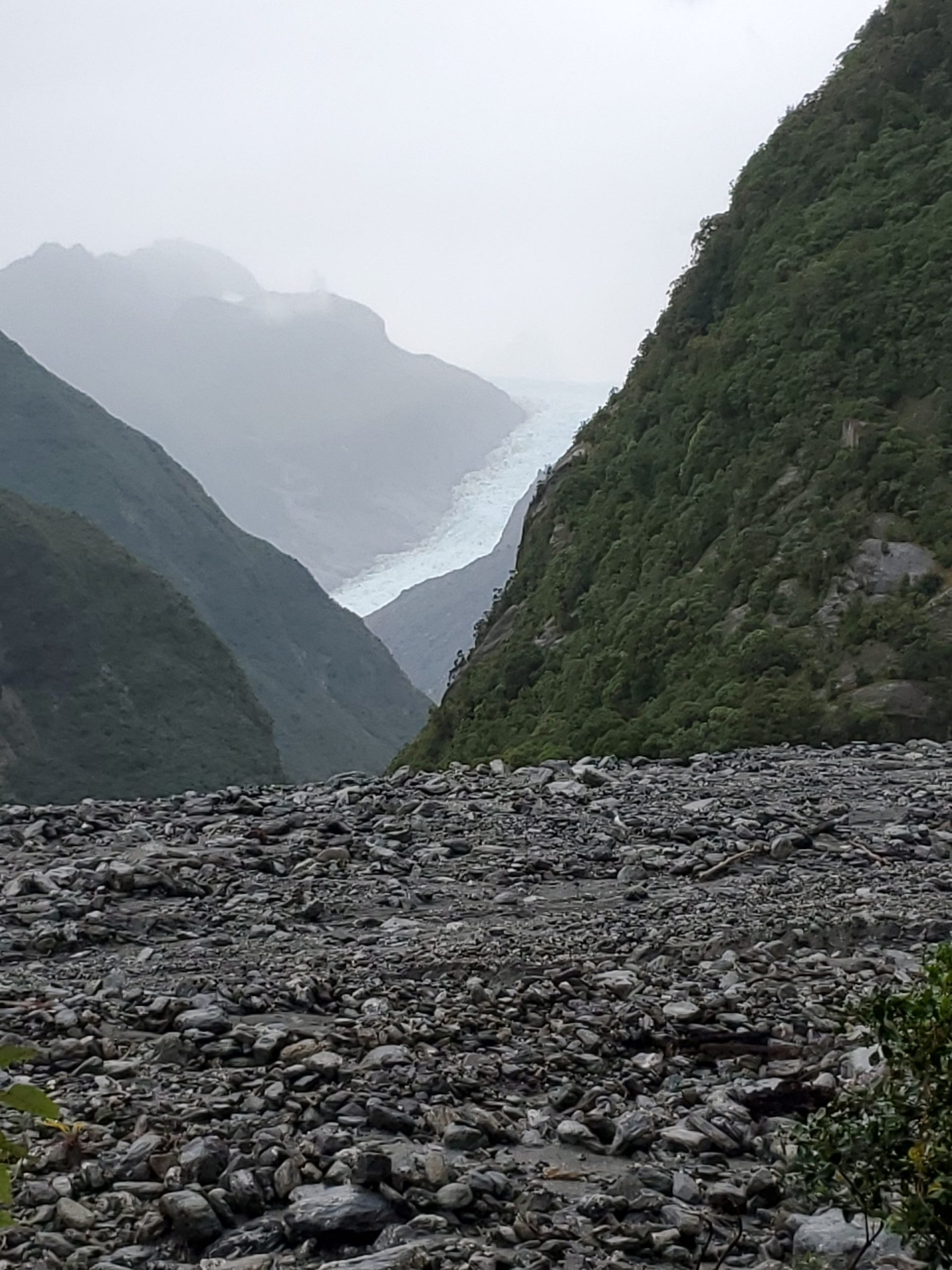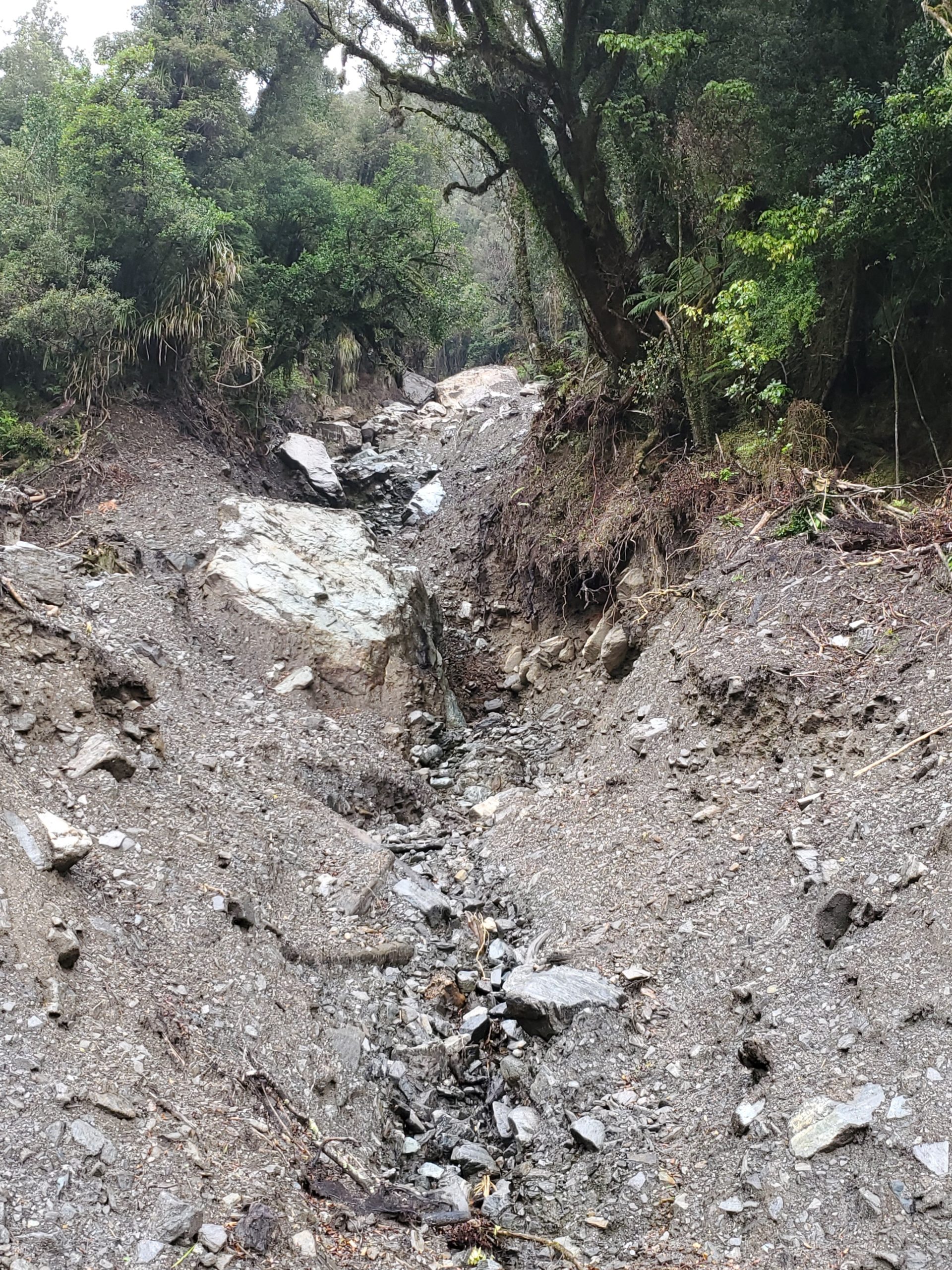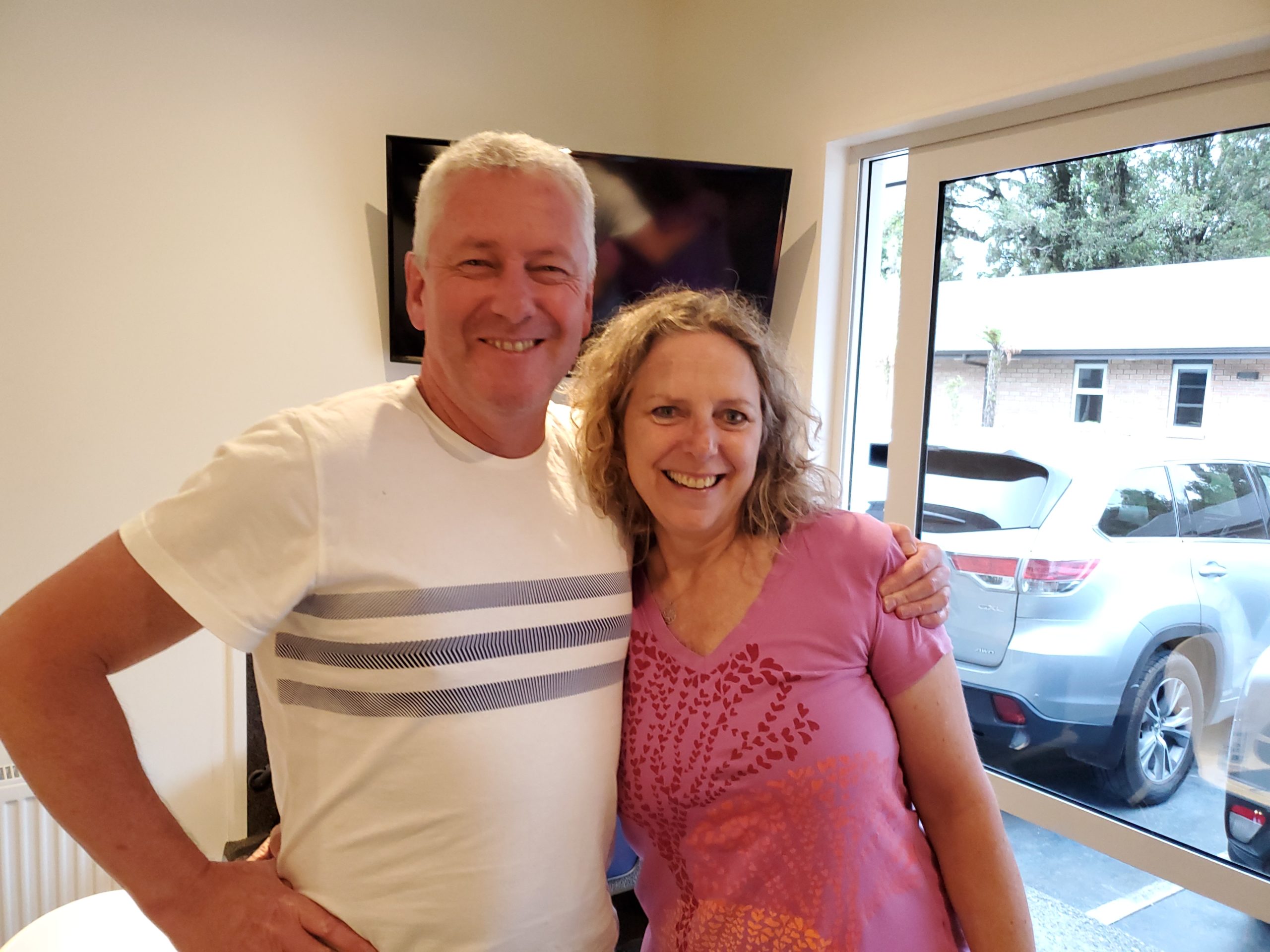The road south from Franz Josef to Queenstown hits the coast at Bruce Bay, where the surf is practically crashing onto the roadway. It hits the coast again a little later, and we stopped at Ship Creek to check out the beach.
The sand flies were out in force here. A quick spray down of Bushman did the trick. We were again very thankful we were wearing our hiking pants. Here is a shot of Ship Creek, that runs into the ocean about 100 meters from here.
There is a nice boardwalk hike along this section, but we had a long drive ahead of us so we got back on the road.
The road curves inland not long after Ship Creek, and then travels through a deep canyon with waterfalls everywhere! Every time you turn a bend there is another waterfall, and most of them have nowhere to stop to take a look. I was going nuts! We then ran across a few that actually have names and trailheads.
A short 1km walk takes you to the Roaring Billy Falls viewpoint. One of the unnamed falls was more impressive to me, but I guess it was too expensive to put in a parking lot.
The massive amount of gravel in the alluvial plains is almost as impressive as the waterfalls.
A little further down the road brings you to Thunder Creek Falls. This was much better than the Roaring “Billy Bob Thornton” Falls.
The road finally arrives at Lake Wanaka, and what a sight this lake is. Beautiful blue colors from glacial flour, and the photos just don’t do it justice. This is looking south, the way we are heading. The wind was howling!
This is looking back north, to the rain soaked areas we are just leaving (but the damn rain followed us to Queenstown).
At “The Neck”, the road shifts over to a view of Lake Hawea, an equally beautiful lake.
Our destination was Queenstown, but we made a detour to Rippon Winery in Wanaka (at the south end of Lake Wanaka). Phillip Gift from Aubert Wines turned us onto this winery, which he visited some 10 years ago. I don’t know how the workers ever go home from this winery when the view from here is this good! The below shot is from the tasting room.
Just outside the tasting room.
Rippon requires you to make a reservation to taste, and if you don’t show up they charge you. If you do show up, the wine tasting is free. The Kiwi’s are a strange bunch!
The wines were pretty good. I particularly liked the unusual white wine Osteiner. It’s a German varietal that dates back to 1928, when Riesling and Silvaner were crossed together. While it started in Germany, Rippon Winery has the largest amount of this varietal in the world (and that’s not very much). It’s truly an excellent wine, so we bought two bottles. Think Vermentino….it’s pretty close.
As you are approaching Queenstown, you get this great view from the top of Crown Range Road.
You then drive down a very steep hairpin road, with at least 7 hairpins that really require you to slow to a crawl so as not to die. It’s like Lombard Street on steroids! Glad we only had to do it once in the huge Landcruiser we are renting!
No shots on our entrance to Queenstown, but the traffic here is the worst we have seen in New Zealand. There is one main road in and out, and we arrived at 4:00 PM, and it seemed everybody was trying to go home from work. The traffic out was backed up for at least 8km. Fortunately our driving was never impacted by the traffic too much, but plan for extra time if you plan to visit here.
Next up, Felton Road Winery and Queenstown.
